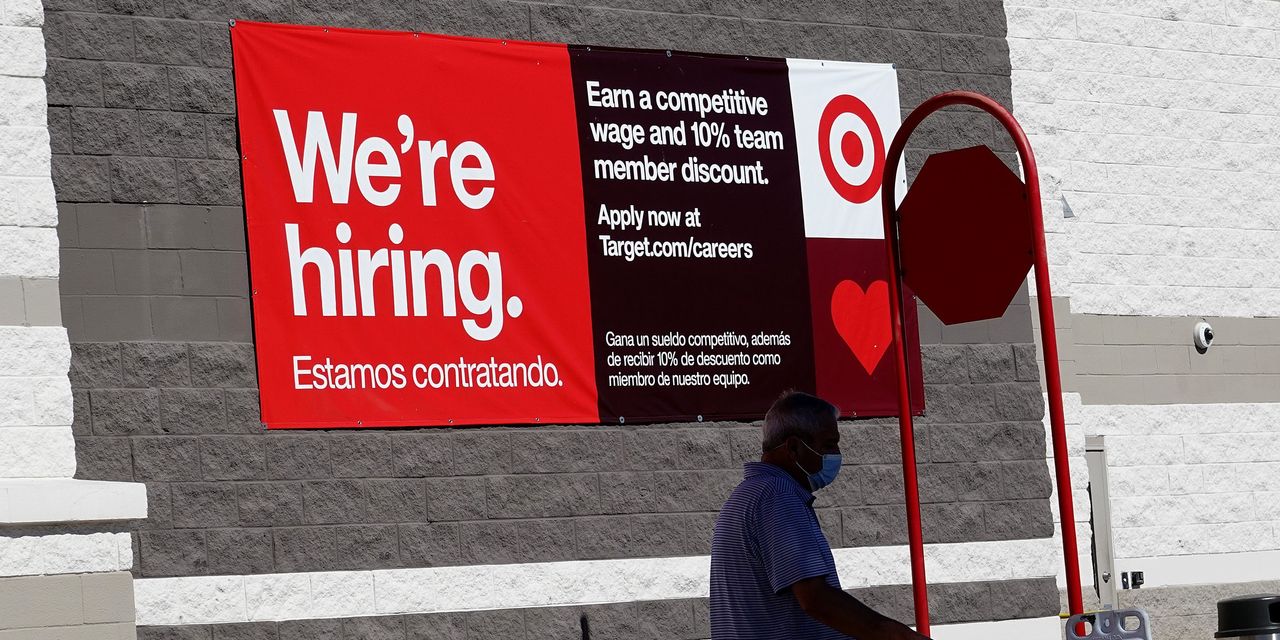
A strong economic recovery and persistent labor shortage pushed jobless claims to their lowest level in more than half a century last week, just 18 months after the pandemic prompted six million workers to file for unemployment in one week.
First-time claims for unemployment benefits, a proxy for layoffs, fell to 184,000 in the week ended Dec. 4, the lowest level since September 1969, the Labor Department said Thursday. The previous pre-pandemic low of 194,000 was recorded late last month.
Unemployment claims have been steadily falling all year as the labor market has tightened amid a shortage of available workers. While the Omicron variant of Covid-19 represents another threat from the pandemic, economists expect labor market conditions to remain tight.
Claims have now fallen below where they were in the year before the pandemic, when they averaged 218,000.
The steady decline in filings is an indication that employers are reluctant to lay off workers as jobs are plentiful, consumer demand is high and the pool of prospective workers remains lower than before the pandemic.
The labor market is unusually tight, with workers in high demand and jobs going unfilled. In October, there were two unemployed workers for every three job openings.
The unemployment rate last month fell to 4.2% from 4.6% in October, the Labor Department said last week, but hiring slowed. While almost 600,000 joined the workforce, there are still 2.4 million fewer people in the labor force than before the pandemic hit.
The tight labor market is expected to keep unemployment filings close to their pre-pandemic level, said Nancy Vanden Houten, lead economist at Oxford Economics.
“We expect claims will start to more consistently hover around pre-Covid averages of 220,000 or perhaps slightly lower given current tight labor market conditions,” she said.
Unemployment claims rose sharply in March 2020, as the first few days of pandemic-related lockdowns caused employers to lay off workers in droves. New filings hit a record 6.1 million in April 2020, eclipsing the previous record of 695,000 in 1982.
Multiple rounds of stimulus legislation extended the length of time workers could receive benefits for up to 18 months and offered an extra $300 a week. The enhanced payments expired nationwide in September as the economy recovered.
More unemployed workers should eventually get new jobs as they exhaust their benefits, said Ms. Vanden Houten.
“This assumes the Omicron variant of the coronavirus doesn’t have a major negative impact on the economy,” she said, referring to the latest variant of Covid-19.
Economists say the low number partly reflects seasonal adjustments that have been thrown off balance by the pandemic’s disruptions, but that the broader downward trend is firmly in place.
Recent warm weather in parts of the country could also have delayed the seasonal layoffs of construction workers, which pushed down the overall number last week, said Joshua Shapiro, chief U.S. economist at MFR, Inc. Once the weather turns cold and those workers stop working, the layoff numbers should climb slightly, he said.
“This whole seasonal adjustment issue combined with the fact that nobody wants to fire anybody contributes to the very low number we’re seeing,” he said.
At the same time, there are fewer people in the workforce, making it hard for employers to fill open positions.
For instance, United Natural Foods, Inc., a bulk food provider, has raised wages and has started offering flexible schedules and earlier paychecks as a way to retain and attract new employees, said Christopher Testa, the company’s president, in an earnings call on Wednesday.
He said he expects the changes “to contribute to long-lasting associate retainment and consistent performance for our customers.”
Roughly 82.1% of people aged 25 to 54 are either working or looking for work, the Labor Department said. That is a lower level than in February 2020, when it stood at 83.1%.
In October, there were about 3.6 million more job openings than unemployed workers, the Labor Department said. That has prompted employers to look for ways to compete for new workers. Private sector wages rose 4.8% last month from the previous year.
Katherine Dobbs is one such worker who has benefited from rising wages. After contracting Covid-19 last year, Ms. Dobbs was out for three months from her job as an emergency dispatcher in Florida, much of that time without pay.
Once she recovered, she moved to Grayson, Ga., to be closer to family and enrolled in a phlebotomy program. In March, she started working as a medical screener for an orthopedic practice making $13 an hour. In the eight months since, she has been promoted twice, most recently in November. She now makes $16 an hour.
“When I got the job it was pretty entry-level,” said Ms. Dobbs. “Just to so quickly start moving up was really cool and kind of unexpected.”
Corrections & Amplifications
The record for new unemployment claims before 2020 was 695,000 in 1982. An earlier version of this article incorrectly gave that figure as 1.1 million. Also, roughly 82.1% of people aged 25 to 54 are either working or looking for work, the Labor Department said. An earlier version of this article incorrectly said the share was roughly 81.9%. (Corrected on Dec. 9)
Write to David Harrison at [email protected]
Copyright ©2021 Dow Jones & Company, Inc. All Rights Reserved. 87990cbe856818d5eddac44c7b1cdeb8








